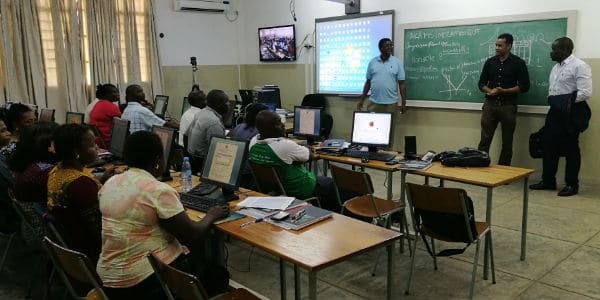
Technology is now becoming a strong factor in the educational sector today. With many schools, encouraging this increase in technology use by providing gadgets like computers, tablets, internet connection, and setting up of programs that are geared towards improving computer literacy for both students and teachers. Although teachers also benefit from the introduction of technology into the classroom setting, they actually find the transition to technology challenging. Most teachers are late adopters; which means they find it difficult to adopt the use of technology that might change the way they have been doing things for a long time.
The purpose of this article is to present solutions to the listed factors that affect the adoption of technology in classrooms as explained in our introductory blog. These solutions apply to recent and future educators, school governing bodies, and every other stakeholder in the educational sector. In our last articles, we highlighted some important points as to why the adoption of technology in the classroom is essential, but this is hindered by some factors;
Lack of adequate funding.
Deliberate resistance by the teachers because of the fear that the technology might replace them.
Teachers lack technical-know-how and inability to use the systems.
Poor electrical power.
As time goes on, there will be an eventual increase in the adoption of technology on a larger scale, so we have compiled some solutions that tackle its delay in adoption.

1. The first thing to do is to put the teachers in mind when introducing these technologies. Since they will be the one teaching the class, it will be nice for them to also have a say in the kind of technologies they will use in their classrooms. Teaching is a personal event, and when you make the teachers feel like their method of teaching is ineffective, they feel discouraged. There is no perfect piece of tech for the teachers, but the teachers should be allowed to use the one they are comfortable with.

2. In a situation where the teachers have no prior knowledge of classroom technology, it is the right of the school administration to train them. As part of the points, we listed on How to Help Your Staff Deliver Quality Teaching Services, we made it clear that the teachers should be provided “with training and workshops. Because they are teachers does not mean they are done learning, teachers that are given the right training get knowledge on how to manage a classroom better, new curriculum materials and how to use them, how to implement recent technologies in the classroom, and become better than before”. Provide trainings to the teachers on newly adopted educational software directly from software companies or trusted service providers. Also, ensure that there is adequate technical and administrative support for the teachers during the implementation.

3. Technology should be used as a means of support for teaching, and not as a total replacement. Teachers-student relationship is still very much important than just having the students communicate with computers and gadgets every time. So rather than introducing classroom technologies as a means of replacement, let it be a source of help to the teachers instead.

4. The introduction of classroom technology requires lots of funding, and this might be a hindrance to you adopting its use in the classroom. You can obtain funds for resources through non-traditional sources (e.g., grants, loans, etc.)
The introduction of technology into the classroom requires the cooperation of the school administrators, teachers, educational technology professionals, and educational software personnel. In the long run, the benefits of its use to the school, teachers, and students are far greater than any other stakeholder.